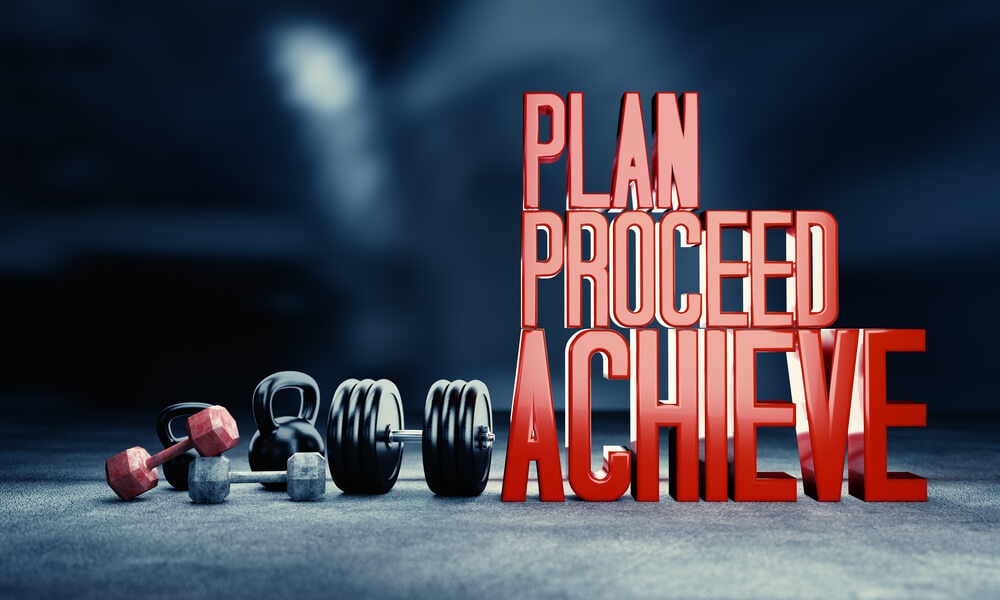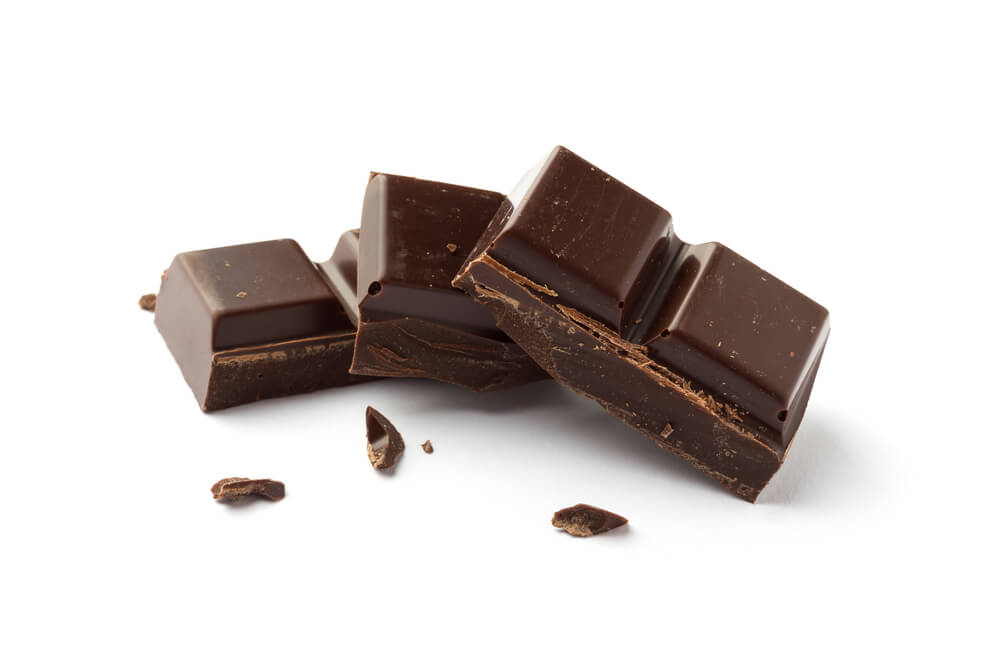
In 2002, I started training fitness clients, here is my advice.
I was still working as a government lawyer during the day, but in the evenings I would travel to the homes and offices of my clients. Armed with my PowerBlock dumbbells and a backpack full of boxing equipment, I was making house calls and getting people in the best shape of their lives.
I opened my storefront business in 2004 in a hundred-year-old building with a leaky ceiling and the stench of sewage permeating the air. In 2007 I moved my business from the leaky stinky 1,600 square foot mess to a 7,700 square foot dream facility.
Clients have come and gone over the years, but those who followed my instructions all got the results they wanted.
The first blog post at gymjunkies.com went up in the fall of 2008. And since then, I am amazed and humbled by the people from all over the world who have achieved fitness success with the assistance of my advice via the internet.
I have personally tested all of the fitness techniques and nutrition tips you can find on this blog. Whether it’s getting stronger with heavy weights and low reps, leaning out with the primal diet, or packing on some muscle, I am my own lab rat (but never a gerbil).
I give you this little time line as a demonstration of my credibility. Yes, I still train real clients one on one. Yes, I have personally morphed from over stressed and out of shape business owner to being in tip top shape. Yes, when it comes to fitness I know what I’m talking about. And yes, even with my experience and proven track record I am recommending that you not believe a damn word I say.
In the macro big picture view of things, fitness is simple. Move your body, eat real food, and get adequate rest. Those three pillars of health and fitness are universal, and will get anyone started on the right path. But what about the micro view? What about the exact set and rep scheme you should use to gain 6 pounds of muscle? What about the exact number of daily calories you should consume to get to single digit body fat? What percentage of your one rep max on the deadlift should you use in a 5 x 5 program?
Here’s the honest answer no one wants to hear: I DON’T KNOW! I can make a pretty damned good educated guess about where to start. But after that, it becomes a never ending cycle of testing and tracking.
There are too many variables from person to person to give cookie-cutter answers. Obvious factors such as training experience, injury history, and genetics all must be considered.
But the less obvious are no less important and can often have more impact. How well do you tolerate dairy? What are the current physical demands and stress levels of your job? What kind of support will you get at home regarding your new healthy lifestyle? Does a new born baby make getting ideal recovery time through sleep impractical at this time?
My Advice…
The list of factors that could affect your training results could go on forever. Rather than get overwhelmed by the variables, I recommend the following as you figure out what works for your unique situation:
1. Look for clues from others
Whether you use your local library or the internet, finding information about fitness is easy. The problem is that there is so much information, you may not be sure what is solid advice and what is complete bullshit. Through comments on posts and forums, the internet provides the capability of communication with others in situations similar to yours. When you see real people comment on my blog about their results – people like Mike McNeil, Lisa Anderson, and Ray L. – you can make a deduction that the methods they used may also work for you. I call these people “trail blazers” and seeking them out can be helpful in finding a starting point for your fitness quest.
2. Record everything.
Once you have a starting point, it’s time to take some action. And when you start taking action, it’s time to make a record. Write down as much detail as is practical for you. At a minimum, record the exercises, weights, reps, and sets of each workout. But consider other factors as well such as rest between sets, the weather, the time of day, and your emotional state or “mood” before and and after the training session. And keeping a log of what you eat is crucial. Over and over I see it – clients who do not keep a food journal do not get results. Also, be sure to test your goal at regular intervals. That could be a weekly weigh-in if fat loss is your goal or testing your deadlift one rep max every other week if you are striving to get stronger.
3. Allow adequate testing time.
So you’ve found a starting point and you’re taking action. But how long do you head down the path before assessing the effectiveness of your program? For weight loss, I recommend two weeks. If you go two weeks in a row without losing a single pound, something needs to change. I’ll take it a step further and say that if you lose less than three pounds in a two week period, your regimen needs some tweaking. Gaining muscle and strength takes a bit longer and I recommend testing your program for a solid 30 days before judging your results. Keep in mind these are just guidelines; all of the variables I keep referring to will also affect what constitutes a sufficient length of time for testing.
4. Course correct.
One of my favorite quotes is from Einstein, “Insanity is doing the same thing over and over and expecting different results.” The results you seek ARE obtainable. But if you are not seeing progress after an adequate test period you MUST change what you are doing. This is where the data you have collecting in your diet and training journals becomes invaluable. You can review what you have done, and then make an educated guess as to what needs to change.
5. Wash, rinse, and repeat.
This process of testing and tracking is a never ending process. Nothing stays stagnant, especially your training. We are all in a constant flux of regression or progression and so our approach to training must remain dynamic. Heed the signs your body gives you and continue to record, test, and correct along the way.
What I write about fitness is not law.
It’s nothing more than my opinion based on accumulated experience. You don’t have to believe a damn word of it. Once you have the basics down, and you understand your body then find what resonates with you, test it yourself, and then come to your own conclusion.
What works for YOU in regards to nutrition and training? Anything counter-intuitive or against mainstream advice? Let me know in the comments below.
– Vic
Latest posts by Vic Magary (see all)
- What’s the Healthiest Alcohol? - Apr 23, 2013
- Destination X—What’s The Exact Body You Want? - Mar 9, 2013
- How to Save Money while Eating Super Healthy - Mar 8, 2013












Vic,
Wow!! You have no idea how much of an impact this is for me! I never have kept track of my gains for the most part, but I am going to write down AMAP! I just recently started my own routine and I was wondering what you might think. So on Mon, Wed, Friday I work my chest, triceps, and shoulder and most of it goes 2×5 for each exercise (2 exercises/ea muscle). On Tuesday and Thursday I work my biceps, back and legs along with HIIT but not too intense of workouts. The reason I workout like this is because I am only 16 and not advanced and I also eat 2 PB sandwiches and a creatine drink right after working out in order to recover fast. On the days I feel sore I don’t exercise though. What do you think about this?
By the way, once I get home I am going to record what I do! Thanks!!
-Michael
p.s. I’m still not sure what works for me yet because Im still in the testing part of my workouts.
Glad to hear you are going to start tracking your workouts. Also consider breaking your workouts into movements instead of muscle groups. At your age, concentrate on sharpening your technique on all of the big lifts. . . deadlifts, squats, overhead presses, pull ups, and bench press for starters. I’d also experiment training without the creatine; at your age and training experience I would guess you would make progress just fine without the supplement. Good luck.
I too have never done cheat days, there’s just no sense in it because truly I believe it’s for those who can’t go without their cravings. I finally got rid of cravings and instead I enjoy eating fruits, veggies, drinking water and tea for snacks. I love my new way of living. I have not touched a cafeinated drink in months!
For the last decade, I didn’t record my workout progress. It showed. I went from fight ready 203lbs (I cut to 185lbs for my fights)at 14% Body Fat to a ballooned 232lbs at 28% Body Fat by the end of 2008.I had big muscles, and a big waist, and big hips, etc. Then I said “no more”! In the beginning of 2009, I started writing down my diet and exercises to the point my wife thought I was crazy because I made an Excel Spreadsheet. WOW! I didn’t realize how many calories I was taking in, or the fact that I was overtraining. So, I relearned how to eat and how to train. Now, the beginning of 2010, I’m 194lbs at 11% body fat (the lowest I’ve EVER been), and I adhere to a Paleo diet. Talk about energy! I was always so afraid of giving up rice, bread, and potatoes. After a 5 day fruit only fast, I’ve never looked back at the “Evil 3”. I feel so much more ALIVE than I ever have. How? When you write things down, it makes it objective. I couldn’t cheat because it was all laid out in front of me. This is why the scientific method works. There is no magic to hard work, dedication, and sometimes going past what YOU think is possible. AMEN?
Blessings,
Jesus
Thanks for your great comment, Jesus. An excellent testament to the power of tracking your training and diet. Thanks!
Your absolutely right. Everyone is looking for that magic elixer or that perfect program that is going to transform their body. The truth is that there isn’t one. Perhaps the only universal truth that works no matter what you do is hard work and commitment.
I have never committed to a program and haven’t really put much effort in to losing weight, but I think about it a lot. I’ve slowly started eating better lately and got a treadmill for christmas, so I can do some walking while I work on my laptop. I know I need to become more serious, and I think that day is coming, but for now, I appreciate your honesty.
Stop waiting. Take action. Life is short. Good luck.
Yes, yes, yes, fitness is highly individual. I like to take a shopping cart approach to all fitness advice, including magazines, books and yes even this blog. I like to read body building books by esteemed trainers and authors, like Arthur Jones (but I only take away the parts that I know are more for a small lean guy like me, not wanting to get huge, still amazed by classic ’70’s style building, though). I also like to read articles and books that deal with functional, athletic training.
Now I do have a question for you… you say that if I don’t see more than a three pound drop in two weeks I should change routines. Now I have been trying to lean out from last years job, which was a stress fest that left me pudgier than I would ever like to be again. In the process I have been eating a reduced calorie diet that is all natural and clean. I have been doing 3 day full body resistance training with an extra day of high intensity short burst cardio. I have been at it for about a month. I look much better but have only lost 2 pounds. Is it possible that I am increasing either muscle size or density while burning my fat? I am losing fat that is for sure, some more to go around the tummy before the 6 pack shows.
Sorry for the novel.
I dont mean to answer for Vic, but i had to drop my $0.02 as well!
Brett,
personally I got pretty big, cut some fat, cleaned everything up and pretty much worked out too much….budddannywaaays…. I went from 178 to 181 in a month but noticed my pants getting looser around the waist and I couldnt deny the changes I seen in the mirror.
So yes…IMO the mirror and the way you feel and clothes fit, is much better indicator of your progress than the scale.
Then….i got hurt. My own doing… and watched myself drop back down to 177. BUT….my pants got tighter and im definitely ‘pudgier’ than I was at 181. If i just go by what the scale says…I am doing great! But I can tell…its not good.
Now if your trying to lose 40lbs or so…the scale should move often if youre on the right track.
Vic, another great write! Keep kicking out the good shit!
-Mike
Sounds like your diet and training are solid. You might be better going with the mirror and how your clothes fit as a measure of your fat loss efforts. The scale is great, especially if there is much weight to lose. But sometimes, the scale can be misleading; in that case the way your clothes fit is the best measure you can use.
Hi Vic,
Your post is right on. A lot of people tend to be complacent and blame the process when they’re not getting results. Even worst, they give up.
This is a great post that is worth repeating over and over again. As Alwyn Cosgrove said, “If you’re not assessing, you’re just guessing.”
Anna
Vic, great topic man!
From one point on people will need to use their heads and actually find out what they respond best to, instead of relying on mags, the internet, etc…
Here is what has worked for me throughout the years:
I. Fatloss – all of the following strategies below have given me good results at one point:
Part 1 – through diet:
-eating high fat, moderate protein (but low calories)
-eating high fiber, moderate protein (again low calories)
-fasting (low caloreis…)
-eating lots of salads (again – low cals…) hm a pattern there lol)
Part 2 – through exercise:
-high volume jump roping (20+ minutes per day)
-high volume squatting and deadlifting (tons of cals expended – 3+ days per week, 8 sets of 6 reps at ~60%+ 1RM)
-high volume basketball training ( 2hrs every day)
Recap – low cals + high volume training
II. Gaining strength.
1. High volume (30+reps), low(1-3 reps out of 3-5 possible reps, not to failure, 3 days per week.)
2. Low volume (2 sets, low reps, often, a.k.a. power to the people protocol)
3. Twice per week, alternate between medium and high volume, a.k.a. Soviet Peaking cycle
4. Westside-style – working up to a max set of 1-3 reps, once per week. Note – it leads to burnout after a few weeks so exercises need to change.
III. Gaining endurance.
1. Ladders:http://www.cbass.com/Pavel%27sLadders.htm
2. Even better – working for strength with method II.1.
IV. Gaining Muscle
1. Method II.1 gives some muscle but as a side effect
2. 8-12 reps to failure for 3-4 sets, 2-3 exercises, once per week.
Cheers,
Yavor
I’m with you on this one, Ray. Cheat days absolutely can work. But for my personality, it’s better to be black and white about my diet. A cheat day turns into a cheat weekend for me.